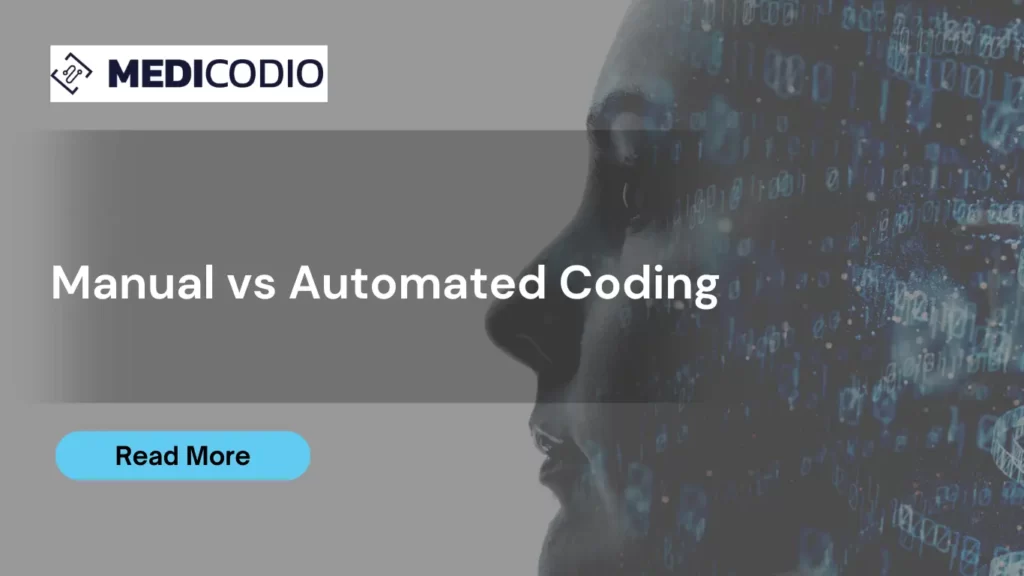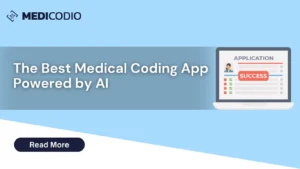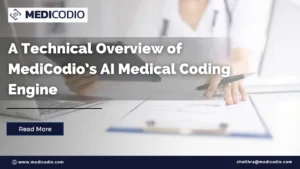In the fast-paced world of healthcare, efficient and accurate coding is crucial for proper reimbursement, streamlined operations, and effective data analysis. Traditionally, medical coding has been performed manually by highly skilled professionals. However, with advances in technology, automated medical coding has emerged as a potential game-changer. Let us explore the advantages and challenges of manual medical coding compared to automated medical coding, shedding light on the impact these advancements can have on the healthcare industry.
What is Manual Medical Coding?
Manual Medical Coding engages human coders to review patients’ charts, medical records and all the necessary documentation to assign standard alphanumeric codes. Reporting these codes to payers accomplishes multiple purposes, one of which ensures that healthcare providers get reimbursed for their services and supplies. It has been serving as the foundation for healthcare industry where it was performed by the skilled medical professionals as accuracy is the key.
The reasons for choosing manual medical coding:
-
- Expertise and Decision making: With all the knowledge and skills possessed by human coders, they can interpret complex medical information and assign accurate medical codes. Highly skilled medical coders can apply their expertise giving better results than AI.
-
- Adaptability: Humans can adapt to the dynamism in the coding guidelines more effectively than the robots and there lies all the difference. In such cases, manual coding done by highly professional coders is more reliable. Complex medical cases, rare conditions, or unique patient circumstances may require human judgment and expertise that makes manual coding a perfect fit due to its flexibility.
-
- Quality Control: Manual coding allows for meticulous review and verification which reduces the scope of errors in the coding process.
Despite the many advantages, manual medical coding has been facing several challenges with the dynamism in the healthcare industry and advances in technology:
-
- Time-consuming: Manual coding can be a time-intensive process, especially for large healthcare facilities with high patient volumes.
-
- Subjectivity and Variability: Different coders may interpret medical documentation differently, leading to inconsistencies in coding practices.
-
- Limited Scalability: Manual coding may struggle to keep pace with the increasing demands of an evolving healthcare landscape.
Automated Medical Coding
With the advancing technology, automated medical coding has given a new shape to the healthcare industry. It has emerged as an alternative and is the future of the medical coding process. Automated medical coding is becoming the pressing priority since it leads to more accurate results making the entire process more efficient than before. The possibility of errors is reduced, and healthcare industry is revolutionizing giving improved patients’ experiences every single time.
Here are some reasons why automated medical coding is the future of healthcare industry:
-
- Speed and Efficiency: Automated coding systems can process vast amounts of medical data in a fraction of the time it takes for manual coding, significantly increasing efficiency.
-
- Consistency and Standardization: Automated medical coding follows predefined rules and guidelines consistently, reducing variability in coding practices.
-
- Scalability and Integration: Automated coding can easily scale to accommodate growing volumes of patient data and seamlessly integrate with electronic health record (EHR) systems.
Despite the pros, automated medical coding is still advancing and comes with limitations which are as follows:
-
- Complex Implementation: Setting up and fine-tuning automated coding systems requires substantial initial investment and technical expertise.
-
- Limited Contextual Understanding: Automated systems may struggle with interpreting nuanced information or complex medical cases that require human judgment.
-
- Accuracy and Reliability: While advanced algorithms improve over time, automated coding systems may still encounter errors, particularly with unusual or uncommon cases.
-
- Due to the ever-changing coding rules and guidelines, automated medical coding may find it difficult to keep up with the trends.
Both manual and automated medical coding approaches have their advantages and challenges. As technology continues to advance, a hybrid approach that leverages the strengths of both manual and automated coding may be the optimal solution, striking a balance between human expertise and technological efficiency in the ever-evolving healthcare landscape.
You can now experience the power of AI automated medical coding solution with CODIO’s Free 30-day trial!
Try now: https://lnkd.in/dYniNRke





